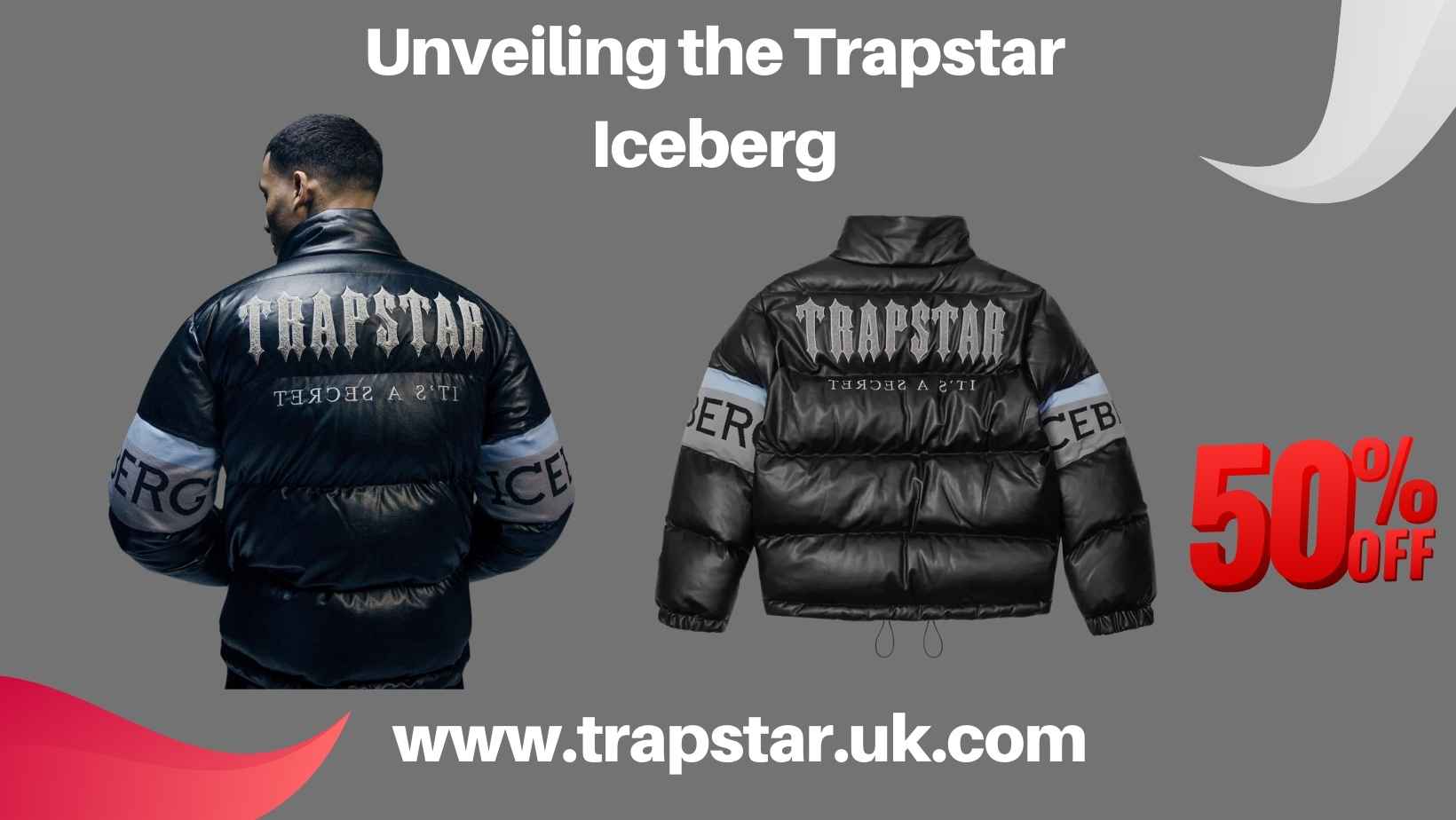Few movements in contemporary pop culture have left as profound a mark as Trapstar Iceberg. What began as a niche phenomenon in streetwear and rap has morphed into a global cultural force that ties together music, fashion, and lifestyle. Trapstar’s mystique, represented through its iconic imagery and ethos, continues to intrigue and inspire fans around the world.
This blog explores Trapstar through the lens of the “iceberg” concept, unpacking its surface-level popularity, deep cultural roots, and hidden complexities. Whether you’re a music enthusiast, streetwear devotee, or cultural tastemaker, this deep dive reveals why Trapstar remains so captivating—and where its influence might be headed next.
What is the Trapstar Iceberg?
To understand Trapstar Iceberg in its entirety, we borrow the “iceberg” concept from pop culture analysis. Imagine Trapstar as an iceberg. On the surface, you’ll see its most visible elements—its distinctive streetwear, mainstream music associations, and cultural popularity. Beneath the surface, however, lies a complex network of influences, histories, and deeper narratives.
A Brief History of Trapstar
Emerging in the early 2000s, Trapstar began as a brand rooted in the intersections between music, street culture, and fashion. Its name, a nod to “trap” music and the hustle it represents, resonated with a generation raised on the ethos of ambition, struggle, and creativity. The clothing line became synonymous with danger, allure, and exclusivity, embodying the rebellious edge of the streets from which it was born.
Why Trapstar is a Phenomenon
Trapstar’s success transcends fashion it’s a symbol of resilience and aspiration. From hip-hop legends to streetwear tastemakers, the Trapstar movement reflects a cultural zeitgeist that bridges struggles with success, inspiring millions to don its bold graphic jackets, tees, and more.
The Surface of Trapstar
Trapstar’s Origins and Mainstream Recognition
Trapstar’s rise mirrors its cultural roots in streetwear and music. Popular artists like Future, Lil Uzi Vert, and Playboi Carti first catapulted the brand into the mainstream, wearing its pieces in music videos, concerts, and Instagram posts. Celebrities like Rihanna and Jay-Z also helped shine a spotlight on the brand, soft-launching it for a wider fashion-conscious audience.
Trapstar’s Influence in the Fashion World
Trapstar Iceberg is best known for statement pieces like its Iceberg jackets, which sport bold graphics and reflect its edgy aesthetic. These distinctive designs have carved a niche in streetwear, blending rebellious energy with luxury appeal. Its collaborations with major brands, including Puma, cemented its status as both a cultural artifact and a high-demand streetwear label integral to hip-hop culture.

The Growing Influence of Trapstar
Trapstar’s Impact on Underground Rap
Beyond mainstream hip-hop, Trapstar has played an integral role in underground rap scenes. Emerging artists wore Trapstar as a badge of authenticity, emphasizing the brand’s street credibility. These connections helped further Trapstar’s organic growth.
One example is the rise of UK drill and its relationship with Trapstar fashion. Local rappers embraced the fusion of gritty music and bold urban aesthetics, pushing the brand into Europe’s underground music scenes.
The Trapstar Aesthetic
Trapstar’s visual language is unmistakable dark, bold, and unapologetically rebellious. These visuals permeate not only its clothing but also music videos and album cover art. The synergy between Trapstar’s creative direction and the streets it draws inspiration from has become a defining aspect of the brand.
Hidden Gems and Lesser-Known Facts
The Birth of the Trapstar Movement
Trapstar’s symbolic ties to “trap” music trace back to Southern rap’s evolution in the early 2000s. Trapstar clothing became an extension of this sound, embodying the genre’s raw energy.
Notable Lyrics and Themes
Trapstar Iceberg is synonymous with multisensory storytelling. Its music inspirations often touch on themes of perseverance, ambition, struggle, street life, and a hard-earned sense of luxury. Key lyrics from icons like Future or Meek Mill reflect these themes and complement Trapstar’s broader brand narrative.
The Trapstar Subculture
How Trapstar Influences Communities
Trapstar isn’t merely fashion it represents a way of life. Particularly in cities like Atlanta and Chicago, the brand’s ethos infiltrates everything from lifestyle to values. It stands as a testament to survival, ambition, and aesthetic refinement.
Key Figures in the Trapstar Movement
From producers to fashion innovators, key players in the Trapstar movement have consistently pushed boundaries. Figures like A$AP Rocky and Skepta have championed Trapstar’s versatility through collaborations and endorsements, further entwining the brand with cultural innovation.
The Dark Side of Trapstar
Controversial Moments
Like any cultural phenomenon, Trapstar hasn’t existed without controversy. From disagreements among artists to critiques about glamorizing street life, the movement has faced public scrutiny.
The Reality Behind Trapstar Lifestyles
The glorified “Trapstar” lifestyle often highlights luxury and success born of adversity, but it raises questions about romanticizing street life. Critics argue that artistic responsibility should come with awareness of the struggles that influences like Trap music portray.
Despite these challenges, Trapstar remains an emblem of raw, authentic storytelling in today’s fashion and music sphere.
Trapstar’s Global Expansion
How Trapstar Spread Worldwide
Trapstar is no longer a US phenomenon—it’s a global symbol. The brand’s influence runs deep in global rap, from UK drill’s unsettling beats to Latin Trap’s fiery flair. Its aesthetic has unified disparate parts of global street culture, influencing international fashion trends in places like Tokyo, London, and Barcelona.
Trapstar’s Role in Global Hip-Hop Evolution
Trapstar’s contributions have given hip-hop audiences a visual language that matches the music’s intensity, helping connect global fan bases. Its success shows how interconnected music and fashion can thrive across borders.
Why Trapstar Will Endure
Trapstar’s success isn’t just about edgy designs or rap star endorsements. It’s about cultural resonance. Trapstar tells a universal story of ambition and creativity crafted from struggle and resilience—qualities that will always drive global youth culture.
Looking ahead, we can expect Trapstar to expand even further, creating more powerful collaborations, championing emerging artists, and continuing to influence the fashion-music nexus. Its legacy is far from complete, yet its mark on street culture and individual identity remains indelible.



Pingback: how to spot a fake Trapstar windbreaker